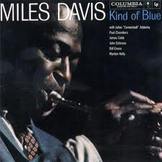 I have been doing some more research on Miles Davis and the impetus that Kind of Blue gave to the jazz that followed as well as the developments in jazz in the early 20 century that brought us to the point that Kind of Blue could be recorded. I checked out Oxford music online and researched Miles Davis younger years. He was a professional player by about 15 and was completely driven by the need to be better than others. He was dedicated to his music. I have also been listening to Kind of Blue some more. As I said in my previous post - its amazing that it was almost perfect first time. And it was not to be repeated - the band broke up soon after. But modal jazz went from strength to strength. Coltrane in particular embraced and explored modal jazz and soon after Kind of Blue, formed his own band and recorded "Giant Steps". He went on to make several more recordings before dying suddenly of liver cancer in 1967. Kind of Blue and Giant steps were important and marked the start of development of other styles such as free jazz, soul jazz, fusion and rock jazz, latin jazz, acid jazz, smooth jazz and brazilian jazz. Musicians developed jazz into an art form. It became more and more complex, clever, but possibly less accessible. Therefore to fully appreciate it needs a deeper understanding. Kind of Blue was an important leap forward at the time. BUT it would not have been possible without the musicians that had gone before. So I have also been listening to some jazz from the early 20 Century and looking at the development of jazz to help decide whether I'd like to research Jazz going forward or back from Kind of Blue. New Orleans was where it all started. The city was a cosmopolitan melting pot of different cultures, languages and their respective music. Following the American civil war Brass bands were huge. Various band music merged to create a multicultural tradition. Dance bands, blues and the latest risky songs all thrived in Storyville, the few blocks set aside for prostitution. It was here that Jelly Roll Morton started his career near the turn of the century as a kid piano player named "Windin' Boy". He began by playing a lot of Ragtime. What is Ragtime? Ragtime was a piano style derived from the mix of brass bands, folk melodies, African-American banjos, spirituals and minstrel songs around at the time. It has a raggy, jaunty feel flowing from the syncopation ragtime has. Loud right hand accents fell between the accents of the left hand rather than on top of them. This syncopated style involved limited improvisation and lacked the swing feel of jazz. But it was important in influencing the early jazz musicians like Jelly Roll Morton. Rags were published at the tail end of the 19 century and by 1899 about 120 rags were published in New Orleans. A ragtime fad swept the US - which was highly dispproved of by the establishment at the time! Important ragtime musicians included Scott Joplin, Walter Gould, Tom Turpin, James Scott and One-Leg Wille Joeseph. Joplin was the King of ragtime writers selling over 500,000 copies of the Maple Leaf Rag. Joplin's music was carefully composed - no improvisation here. He wanted to be taken seriously as a composer and saw himself as the black american counterpart to Chopin or Strauss. Joplin died in 1917. Here's a video of Scott Joplin's great tune "The Entertainer" New Orleans jazz The influence of call and response and improvisation in Congo Square coalesced into a New Orleans style of music which was often characterised by several horns improvising on simple chord changes. There were lost of cheap brass instruments around following the civl war. There would also be rythmn sections with piano and banjos. Charles Buddy Bolder (1877-1931), led a Ragtime band as a soloist cornetist and entranced the city. He developed ragtime into a powerful bluesier, hotter style. In particular he invented the skip beat. Why is this important? Because it gave Jazz its rythmn. He dominated the jazz scene and was the first real jazz star until 1907 when he had a mental collapse. There is only one known photo of him but he was undoubtedly one of the key figures in early jazz. Here's an interesting Youtube video on him which also explains the skip beat if you are interested in hearing more. The music was structured but also allowed more rythmn and improvisation in an organised way Following the early years in Storyville district, Jelly Roll Morton (pianist) began to travel around the gulf coast. He was an extrovert and bragged endlessly that he invented jazz. He embellished the ragtime and blues styles. By 1911 he had visited New York and he eventually settled in Chicago the home of new jazz in 1914. He composed his earliest tunes here. In 1917 he travelled to California and travelled up and down the west coast. He returned to Chicago in 1923 and made his first recordings. Classic recordings of his include Sobbin' Blues, Mr Jelly Lord, (with the New Orleans Rythmn Kings, "New Orleans Joys, King Porter Stomp , Wolverine Blues (piano solos). He relocated to New York in the late 1920s and recorded some more. But by 1930 his style was out of fashion and he struggled from here on. He eventually died in poverty and obscurity at age 50 in Los Angeles in 1941. His legacy is huge and includes a series of interviews for the Library of Congess reminiscing about his career including some songs named after Buddy Bolden - one of them sung by Frank Sinatra! There were a plethora of active jazz musicians in New Orleans in the early days. The first recording of the New Orlenas style was not made by Morton - but by the Original Dixieland Jazz Band who recorded "Livery Stable Blues" which featured passages where the instruments imitated farmyard animals. Other pioneers included Freddie Keppard, Kid Ory, and King Oliver. The following picture gives a typical example of New Orleans music where each instrument has a role. Piano and banjo provide the rhythm, trumpet plays the main melody and clarinet embellishes 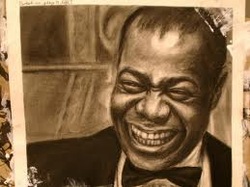 Louis Armstrong Chicago Jazz By 1917, the Storyville District was forced to close and jazz musicians moved north. In the 1920s some of the key soloists began to emerge - for example Louis Armstrong, Bud Freeman, . "Armstrong plays with such bravura and intensity that when you listen to is you hear the future. At that moment you know something is in the works that is never going to be contained" Gary Giddins, critic, 2000 The hottest jazz bands could be found in a nine block stretch known as "The Stroll". There were a mix of musicians - some white who attended Austin High school and some black. Together they developed the Chicago style - which built on the rhythmic innovations of New Orlens jazz but with a more frenetic intensity. As mentioned above Jelly Roll Morton and the New Orelans Rhythm Kings were recording together. Louis Armstron turned up in 1922 to join his mentor King Oliver in the Creole Jazz Band. The two cornet players had an intuitive call and response chemistry. They recorded "Chime Blues" in 1923. Armstrong went on to be fantastic soloist and moved to New York at the of the 1920s. Swing His influence was strong and the general level of musicianship rose. We started to see more syncopation, scat singing and improvisation. The influence of Louis Armstrong is strong and raised the level of musicianship. Swing bands and their leaders started travelling around the dance halls and swing became commercially viable. This was important as it spread jazz throughout the USA. Count Basie, Glenn Miller and Benny Goodman were all important. The dance music that these bands played stood the test of time and swing bands are still very popular today. I love this foot tapping music. Some iconic tunes from the time are
Big bands played music with a strong structure (both melody and chords). Trumpets, saxes, trombone sections would provide chords and rhythms. But there would often be some opportunity for soloists to take a turn during the pieces to improvise. Musicians were experimenting with different instruments - e.g. drum solos, rhythms etc. But swing band solos stuck to the notes of the various chords they were using. This combination of disciplined arrangements but also some improvisation within limits were the hallmark of the big bands. Each of these developments was important. Each built on the work of previous musicians and moved the development of jazz forward in incremental steps. Swing was interrupted by the Second world war. Next the Bebop era emerged in the late 40s and 50s. Why was Bebop important? Because it marked the start of a more advanced form of jazz based on more complex improvisation and chords. We start to see musicians beginning to develop a freer style. Charlie Parker (1920 - 1955) in particular was extremely influential and pushed the boundaries at this time. He grew up in Kansas but moved to Chicago and then New York. It was here that he really developed his style. In the 1940s he began working with up ad coming jazz artists like dizzy Gillespie and they formed a powerful partnership. They took their music to Holywood in 1945/46. He used the whole range of his instrument and improvised in a way that noone had heard at the time. Chord sequences went beyond the II, V, I sequences of the time. This, in turn, inspired the musicians around him. For example the file below begins with ii, V7, I but then goes to iv and VII7, then I, bVII 7, VI 7, II7, ii, V7 etc. For now, we should just note that there many more variations than the earlier chord structures. Minors were sometimes replaced with dominant 7s to give a stronger sound (e.g. the D7 instead of Dm). I will do a separate blog on this analysing is in more details in the next few days. Musicans were developing a language of advanced improvisation techniques and harmonies. As well as more complex chords, jazz musicians started improvising beyond the notes of the basic chords, using chromatics, passing notes. Tempos were fast. These features characterised the Bebop style. The music was more a guide. Chords and a simple melody would be given (called the heads). Musicians would improvise using the these as guides. The following Youtube video plays the animated music to "Confirmation". Its interesting and is a good example of Charlie Parker's playing and the Bebop style. 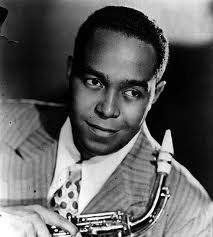 Charlie Parker And who was playing with Charlier Parker some of the time? Along with other important jazz musicians, Miles Davis played with him. There's no doubt that Kind of Blue would not have been made without the development of Bebop and the ideas of the Bebop musicians. Bebop is still important today and most (all?) serious jazz musicians are familiar with the concepts as it provides the early foundation of the more advanced forms of jazz around today. Free jazz began to emerge at the tail end of bebop. It is a natural progression and pushed improvisation even further than Bebop did. This music is amazingly complex, clever but definitely not easy to understand. To the uneducated ear its difficult to listen to - rather like a foreign language. If you have been steeped in the jazz world you are fluent. If you are a musician, but have not played jazz, you might know a few words of the vocabulary but for most people its completely impenetrable! Important players include musicians like Ornette Coleman, Miles Davis and John Coltrane Free jazz is - as the name suggests, is an even freer style than Bebop and is characterised by some principles:
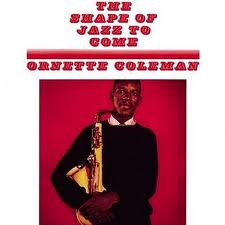 Ornette Coleman recorded The Shape of Jazz to come in 1959. It was shocking at the time. Very abstract and avant garde. It avoids and chording instruments (no piano). There are simple melodies at the start and end of the pieces with extended solos in between. This built upon the Bebop structure of heads - solo - heads. However he broke away form the concept of laying down chords which was new. There were also simultaneous solos. It was controversial. Miles Davis was in the thick of this movement as was John Coltrane - the fantastic tenor saxophonist that played with Miles Davis on Kind of Blue. Musicians were instructed to play as if they could't play! And some thought that Ornette Coleman genuinely couldn't play. But although its difficult to understand its exciting too. The music seems primal - almost human screaming. Some have attempted to transcribe this music. I am attaching pdfs of Lonely Woman and Bitches Brew - two of the iconic free jazz tunes which were influential. Bitches Brew sold over 1 million copies. These look deceptively simple. They give a heads but with directions to interpret freely, no chords, and then instructions for extended solos and "band freaks out".
I'm attaching the Youtube video of Ornette Coleman's Lonely Woman below. The melody is an outline which is to be interpreted freely. No changes. It has an extended alto solo. Its difficult to listen to but there is no doubt that is is very atmospheric and expressive. Could Ornette Coleman play like that if he has no knowledge of his instrument? Seems very unlikely. Fusion with other genres was next - e.g. rock, latin etc. Jimi Hendrix pioneered this as did Mile Davis. Unfortunately Hendrix died too early to know how far he could have developed this. More on this in a further blog. 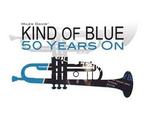 I'm keen to learn. Traditional music is pushing the boundaries and there is a blurring of the boundaries with other genres. For example look at Salsa Celtica - primarily a jazz/latin band that plays celtic music in amongst the horns. The techniques behind modern jazz improvisation will improve my own playing. But to be able to really understand and appreciate modern jazz, and the advanced techniques that are relevant now - its important to go back first and understand the development of jazz. Before we leave Miles Davis, check out the following quote: "Jazz has got to have that thing. You have to be born with it. You can't learn it. You can't buy it and no critic can put it into any words, It speaks in the music. It speaks for itself" More than 50 years on - is he right? I think you have to have a feel and a good ear for music and be prepared to work to understand it. But I believe that if you have that, you can learn jazz. What do you think?
0 Comments
Your comment will be posted after it is approved.
Leave a Reply. |
Fiona Harrison
|
||||||||||||



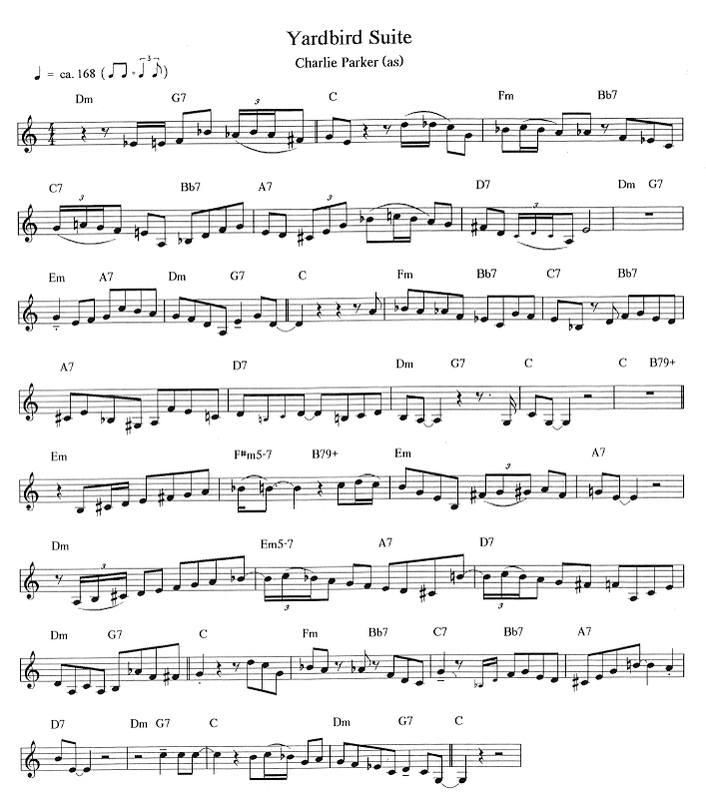
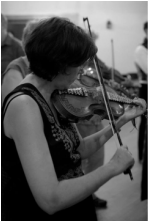
 RSS Feed
RSS Feed
